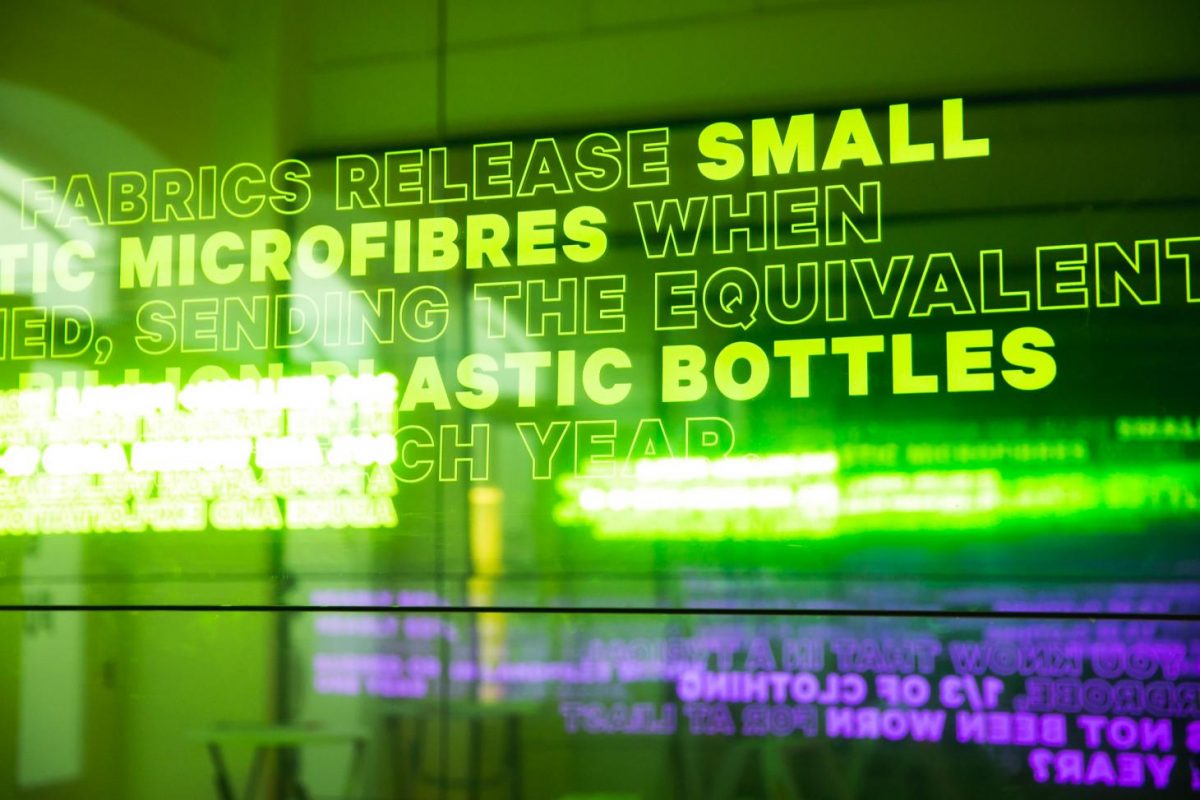‘Sustainability’ in fashion: historically seen as a byword for overpriced, hemp-rich bohemia and aggressive (and often deceptive) greenwashing. But Brooklyn-based design studio Local Projects in collaboration with Dutch company Fashion for Good, has sought to give fashion sustainability a well-deserved rebrand. Through an interactive, educational and experiential space for the new Fashion for Good museum in central Amsterdam the designers have tackled big issues on a palatable, consumer scale.
To the insular eye, fast fashion had felt largely harmless; cheap frills, instant gratification and few side effects aside from the looming, intangible threat of climate change. Fashion is now branded with the unenviable label of ‘second-most polluting global industry’ with manufacturing facilities flushing enormous quantities of chemically contaminated water back into the ecosystem; landfills bursting at the seams and 60 per cent of all clothing being disposed of within a year of being made.
Infinity Mirror in the Fashion for Good Museum. Courtesy Presstigieux
When luxury fashion hopped on the sustainability bandwagon, pivotal moments began to occur – Gucci went fur-free, Tom Ford launched his ‘Made in Italy’ venture supporting Italian craftspeople and Stella McCartney unveiled an alt-leather bag comprised of mycelium (also known as mushroom roots).
Local Projects – the creators behind the stirring and immersive 9/11 Museum in New York – have now turned their hand to cracking the fashion crisis, injecting intelligent, tech-infused concepts into this expanding corner of the industry.
The team – with founder and designer Jake Barton at the helm – first tested the water with a temporary ‘launchpad’ exhibition in the same spot last year. In the newly unveiled permanent space – which weaves both retail and museum elements into one package – visitors are able to commit to making small, personalised changes as opposed to the intimidating prospect of tackling sustainability on an industrial scale.
Each visitor is given a digitally enabled bracelet on arrival (made from recycled plastic dredged from Amsterdam canals) which they can used to tap in at 33 ‘action stations’ dispersed around the space to track, educate in and ultimately reform buying behaviour beyond the museum walls.

The ‘Innovation Lounge’ that presents 50 concepts that are set to shake up the fashion industry
‘There’s something for every visitor,’ Barton says, ‘from more traditional museum exhibits that can be experienced passively, to exhibits that are meant to be touched and interacted with.’
On the ground floor, ‘The Good Shop’ is a sleek, carefully curated space where visitors can browse and learn about a collection of sustainable apparel from the likes of Stella McCartney, Adidas x Parley and Kings of Indigo.
In the adjacent room, shoppers can design their own T-shirt on site, using projection mapping and biodegradable fabric which is ‘cradle-to-cradle’ sustainable. ‘Visitors get a sense of ownership, and start to understand just how powerful their influence might be as consumers,’ Barton explains.
Upstairs, the ‘Innovation Lounge’ presents 50 concepts that are set to shake up the fashion industry, posing questions like ‘how is biodegradable glitter created?’ and ‘how can blockchain technology make the garment production processes more transparent?’ ‘The History of Good Fashion’ section traces a timeline of sustainability innovation spanning four centuries including seminal moments in labour rights and environmental advances.
There is no quick solution to fast fashion, but Local Projects and Fashion for Good have garnered attention with their innovative mode of storytelling ready for the world to listen. This venture emphasises the history, joy and potential in fashion retail and despite a turbulent track record, sustainability has never felt so sexy. §

